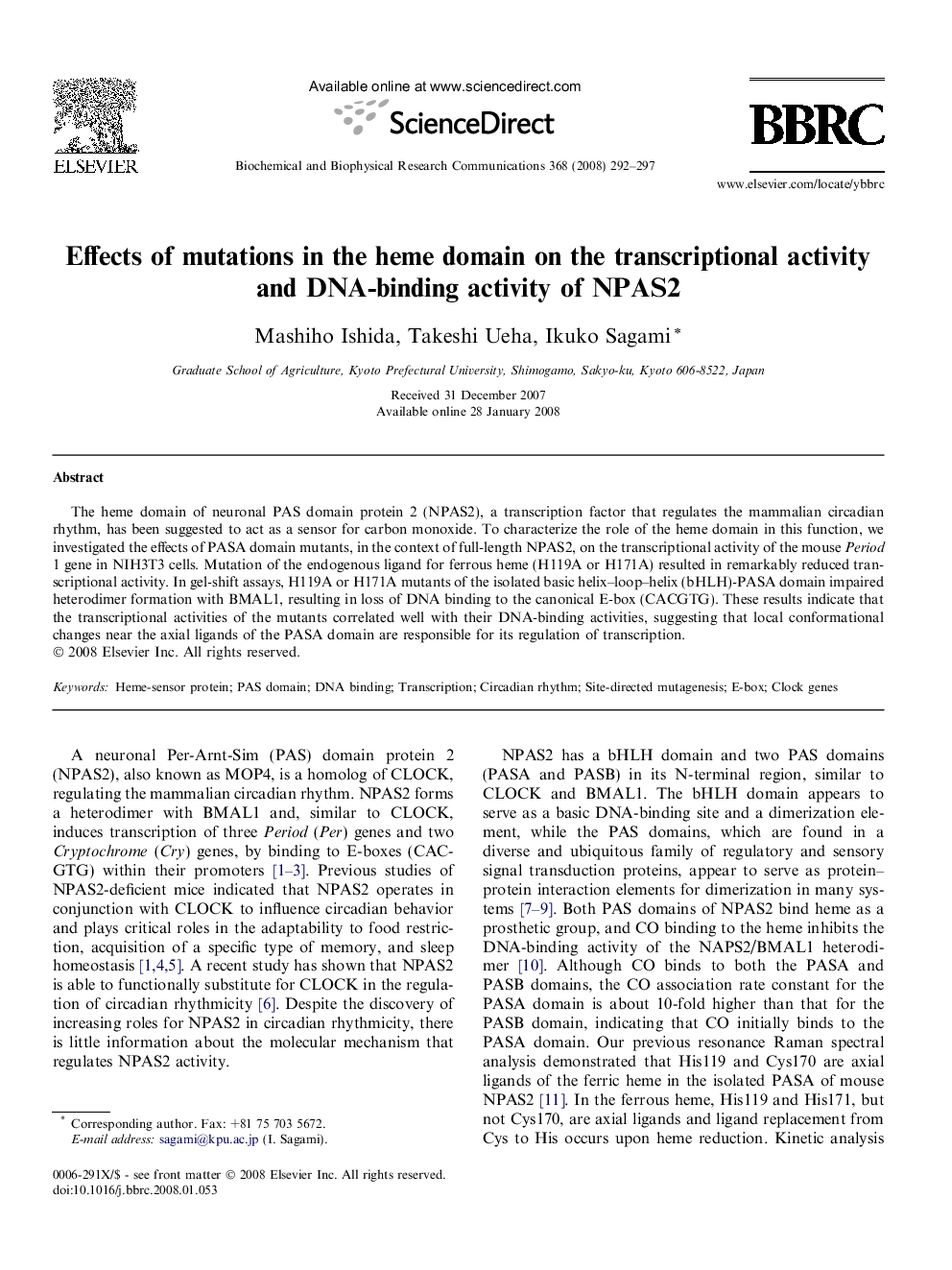| Article ID | Journal | Published Year | Pages | File Type |
|---|---|---|---|---|
| 1935806 | Biochemical and Biophysical Research Communications | 2008 | 6 Pages |
The heme domain of neuronal PAS domain protein 2 (NPAS2), a transcription factor that regulates the mammalian circadian rhythm, has been suggested to act as a sensor for carbon monoxide. To characterize the role of the heme domain in this function, we investigated the effects of PASA domain mutants, in the context of full-length NPAS2, on the transcriptional activity of the mouse Period 1 gene in NIH3T3 cells. Mutation of the endogenous ligand for ferrous heme (H119A or H171A) resulted in remarkably reduced transcriptional activity. In gel-shift assays, H119A or H171A mutants of the isolated basic helix–loop–helix (bHLH)-PASA domain impaired heterodimer formation with BMAL1, resulting in loss of DNA binding to the canonical E-box (CACGTG). These results indicate that the transcriptional activities of the mutants correlated well with their DNA-binding activities, suggesting that local conformational changes near the axial ligands of the PASA domain are responsible for its regulation of transcription.
